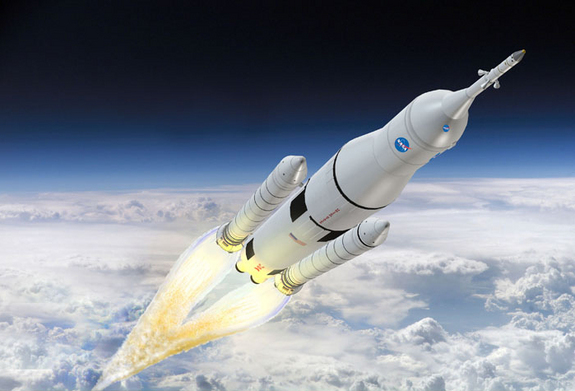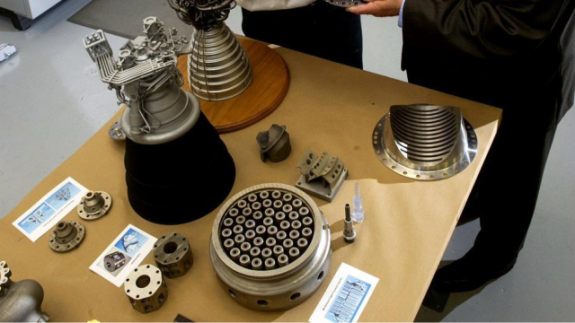NASA will print parts of a rocket for a flight to Mars on a 3D printer

NASA engineers are building the largest rocket ever built by an agency that can take us beyond the Moon using 3D printing.
Plastic is used as a printing component. For sintering the material is used selective fusion laser. It now takes hours to get a part that previously took weeks to manufacture.

“We are looking for ways to cut costs, increase efficiency and reduce weight,” says NASA chief executive Charlie Bolden Fr.
“The big advantage of 3D printing is that there are no welds, there is no room for leaks, it starts from scratch and turns into what you want in one fell swoop,” he told Mashable .
')

NASA has been using the laser-selective method of melting for years, but for the first time it uses it to make a rocket of this scale.
The SLS rocket is important for entering deep space, which the retired fleet of space Shuttles could never have. As a first stage, the SLS booster from the launch pad gives the initial impulse to the spacecraft, taking it out of the atmosphere. To launch rockets, SLS will have 8-9 million pounds of thrust.
Right now, SLS can lift 70 tons into space, but ultimately will be able to lift 130 tons. This is important for a long-term mission that can take several months. “When we fly to the moon, we don’t need heavy rockets,” says Bolden. "But we need significantly more weight [for traveling to an asteroid or Mars]."
Why does 3D printing help SLS? It turns out that lightweight plastic components handle the stress of high launch speed better than some heavy welded materials.
While Mars is still a distant future for SLS, asteroids are most likely in the first place. One of the advantages of this rocket is the ability to reach the Earth-threatening asteroids before it is too late. This task became even more urgent after last week the meteorite in Russia became a surprise, and then the asteroid passing too close to the Earth.
“The further you intercept the asteroid, the less effort you will have to drop it from a dangerous orbit,” indicates Bolden. "If we can detect and characterize an asteroid, we can get to it faster, and there will be less work to change its path."
How would NASA stop an asteroid from crashing into the Earth? Although there have been proposals for the use of nuclear warheads, Bolden does not agree with this strategy, saying that it will create more small asteroids. Instead, he suggests pushing the asteroid off a dangerous course.
“All we know is that an asteroid has magnetic properties. So if we can find a way to be near an asteroid, we can transport or push it away, ”he says.
Perhaps 3D printing one day will save planet Earth, but now this process satisfies more pressing needs: domestic production.
“When the president highlighted manufacturing progress in his address to Congress, our ears were reddened,” says Bolden. "We have been working on it for several years."

Frank Ledbetter (right), Non-Metallic Production Manager, Marshall Space Flight Center (MSFC) NASA, discuss with Nancy Tolliver, an engineer, 3D partition printing, which is part of the main SLS engine - RS-25
Based on Amanda Willis and mashable.com
Photo MSFC / Emmet
Note
In early November, I translated the article “ Will Americans Fly to Mars - how does this depend on the results of the election of the President of the United States ?”
And right after the election , it was said that plans to reach the asteroid belt in 2025, and Mars in 2030 remain in place, and that NASA hopes that the SLS-Orion combo (Orion space launch system ) will launch astronauts by the end of 2021. Creating this rocket becomes a priority for the agency.
NASA is focusing efforts in deep space, planning to deliver people and cargo into near-earth space to be fully serviced by American commercial space companies, the agency has spent $ 1.4 billion on the development of which over the past two years. The agency has already signed contracts for the delivery of goods with the company SpaceX for 1.6 billion dollars, and the first Dragon have already delivered the cargo to the ISS and back. In addition, the agency has signed a $ 1.9 billion contract with Orbital Sciences to make eight unmanned flights of the Antares rocket and the Cygnus spacecraft.
Source: https://habr.com/ru/post/170435/
All Articles